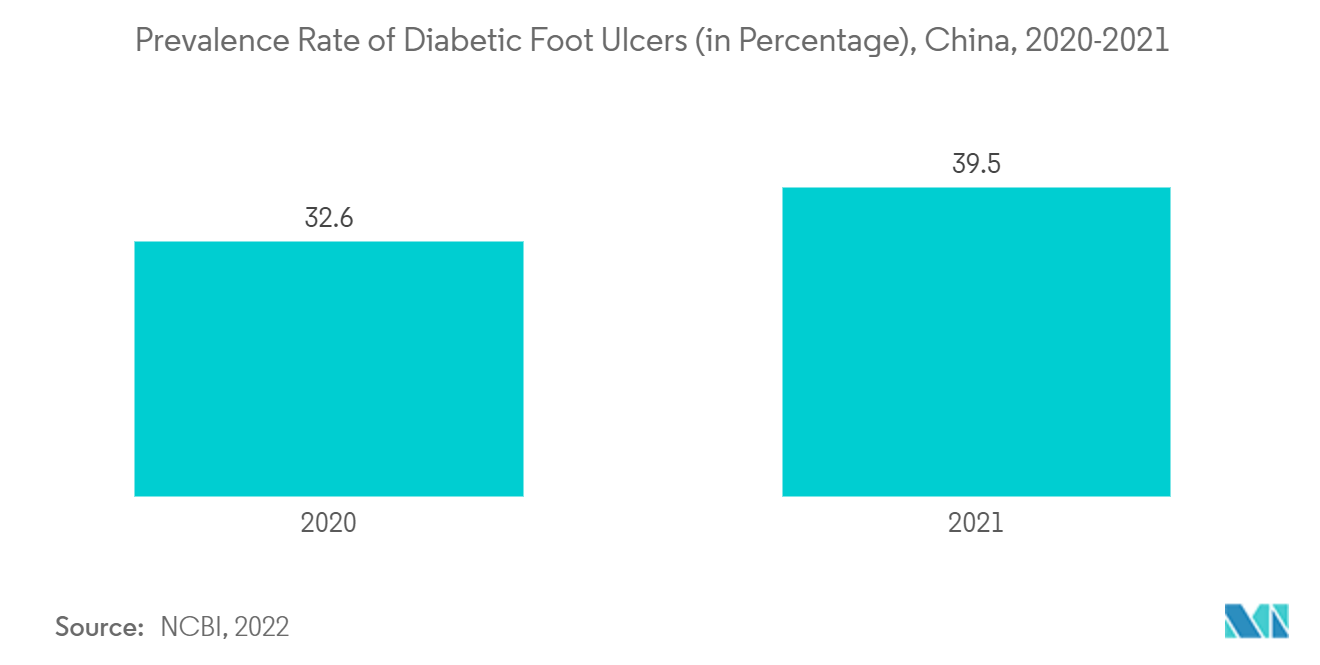Market Trends of China Artificial Organs & Bionic Implants Industry
This section covers the major market trends shaping the China Artificial Organs & Bionic Implants Market according to our research experts:
Orthopedic Bionic Segment is Expected to Witness Significant Growth Over the Forecast Period
- Orthopedic bionics are intended to help physically disabled people regain motor function. Bionic limbs replace prosthetic limbs, which have been the standard for over a century. Despite remarkable innovations that led to lighter devices and better designs, prosthetic limbs did not provide the necessary functional restoration that bionic devices now provide. The bionic limb is connected to the patient's neuromuscular system to control the limb bending, flexing, and grasping using the brain.
- The increasing number of amputations due to chronic wounds is one of the major factors driving the segment's growth. For instance, as per the Multidisciplinary Digital Publishing Institute (MDPI) study published in July 2022, around 45.0% of diabetic patients in China suffered from diabetic foot ulcers, and the amputation rate from diabetic leg ulcers ranged from 18.0% to 28.0% in 2021. Therefore, such a high prevalence of chronic wounds and amputation rate from chronic wounds in the country are anticipated to drive the demand for orthopedic bionics, thereby propelling segment growth.
- In addition, increasing new product launches and approvals in China are also expected to surge segment growth. For instance, in March 2022, Suzhou MicroPort Orthopedics Scientific (Group) Co. Ltd. announced that it received registration certificates from the National Medical Products Administration (NMPA) for two independently developed knee system products, SoSuperior+TM and MedalOneTM to market in China.
- Therefore, such innovative product launches by key players and an increasing number of cases of amputations due to chronic wounds are anticipated to propel the demand for orthopedic bionics. Thus, the orthopedic bionics segment is expected to project considerable growth over the forecast period.

Artificial Kidney Segment is Expected to Witness Considerable Growth Over the Forecast Period
- An artificial kidney, also known as hemodialysis, is the process of filtering or removing waste products accumulated in the blood of patients whose kidneys are functioning at a low level. The blood from the patient's body is pumped into the dialysis unit (which contains a cellophane tube surrounded by a liquid that has the same composition as the plasma in the blood, except for waste products), and the blood is purified. The dialysis tubing's cellophane tubing acts as a semipermeable membrane, allowing nitrogenous waste to pass through the tubing and into the dialysis fluid.
- The increasing number of kidney diseases in China is one of the major factors propelling the segment's growth. For instance, as per the study published by NCBI in October 2022, chronic kidney disease (CKD) is a significant health problem characterized by its high incidence, high mortality rate, and multiple complications in China. The study also reported that chronic kidney disease increased mortality risk, reduced life expectancy, and increased medical costs in China in 2021.
- Similarly, according to the National Institutes of Health (NIH) study published in June 2021, the prevalence of kidney disease treated with dialysis has risen in China and is predicted to increase further through 2025. Furthermore, according to the British Medical Journal (BMJ), 2021, there is a high demand for artificial kidneys in China as many people suffer from chronic kidney disease and advanced chronic kidney disease. An artificial kidney is one of the essential requirements for diagnosing kidney diseases. Therefore, increasing cases of kidney diseases in China is anticipated to propel the segment growth during the forecast period.


